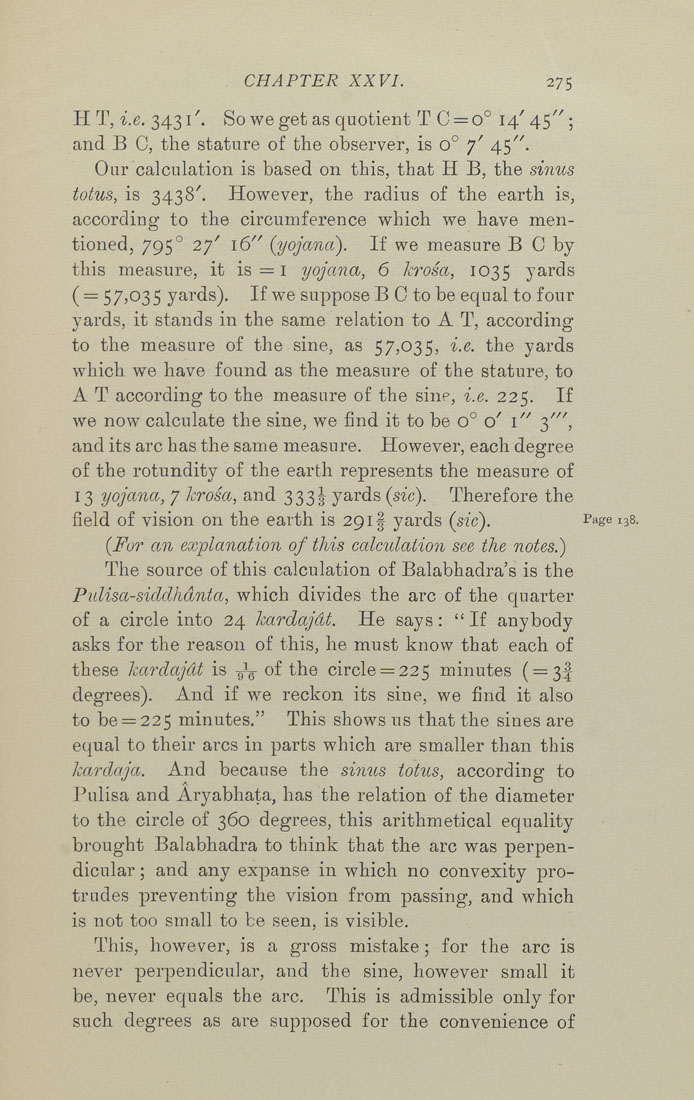CHAPTER XXVI. 275
H T, i.e. 3431'. So we get as quotient T C = 0° 14' 45'';
and B C, the stature of the observer, is 0° 7' 45'^
Our calculation is based on this, that H B, the sinus
totus, is 3438^ However, the radius of the earth is,
according to the circumference which we have men¬
tioned, 795° 27' 16'' (yojana). If we measure B C by
this measure, it is = I yojana, 6 la^osa, 1035 yards
( = 57,035 yards). If we suppose B C to be equal to four
yards, it stands in the same relation to A T, according
to the measure of the sine, as 57,035, i.e. the yards
which we have found as the measure of the stature, to
A T according to the measure of the sine, i.e. 22$. If
we now calculate the sine, we find it to be 0° o^ i" '^"',
and its arc has the same measure. However, each degree
of the rotundity of the earth represents the measure of
13 yojana, 7 krosa, and 333 j yards (sic). Therefore the
field of vision on the earth is 291| yards (sic). Page 138.
(Por an explanation of this calculation see the notes.)
The source of this calculation of Balabhadra's is the
Pulisasiddhdnta, which divides the arc of the quarter
of a circle into 24 kardajdt. He says : " If anybody
asks for the reason of this, he must know that each of
these kardajdt is yig- of the circle = 225 minutes ( = 3|-
degrees). And if we reckon its sine, we find it also
to be = 225 minutes," This shows us that the sines are
equal to their arcs in parts which are smaller than this
kardaja. And because the sinus totus, according to
Pulisa and Aryabhata, has the relation of the diameter
to the circle of 360 degrees, this arithmetical equality
brought Balabhadra to think that the arc was perpen¬
dicular ; and any expanse in which no convexity pro¬
trudes preventing the vision from passing, and which
is not too small to be seen, is visible.
This, however, is a gross mistake; for the arc is
never perpendicular, and the sine, however small it
be, never equals the arc. This is admissible only for
such degrees as are supposed for the convenience of
|








